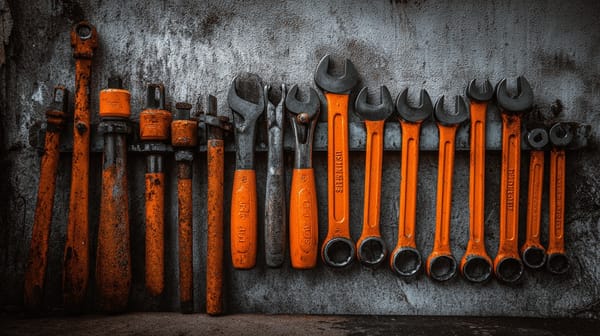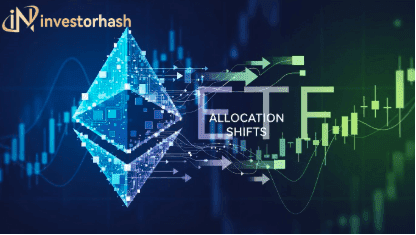How Decentralized Autonomous Organizations Could Transform Corporate Structures
The corporate landscape is rapidly evolving. New technologies and shifting societal values are changing how companies operate and relate to stakeholders. One potentially transformative innovation is the decentralized autonomous organization (DAO). DAOs offer a new organizational model built on blockchain technology, with the potential to reshape corporate structures.
What are Decentralized Autonomous Organizations?
Decentralized autonomous organizations are entities that operate via rules encoded on a blockchain. DAOs have no central leadership. Instead, governance and decision-making are distributed across all members through transparent voting processes. Smart contracts autonomously execute the organization's activities based on member votes, with no need for traditional management hierarchies.
DAOs are decentralized, meaning power and control are distributed, not concentrated in a single entity. They are autonomous in that they operate automatically based on pre-programmed rules, with no central authority directing activities. This enables DAOs to function independently, beyond the control of governments or corporations.
Key Characteristics of Decentralized Autonomous Organizations
DAOs have several key characteristics that differentiate them from traditional companies:
- Distributed governance - Rather than top-down control, DAOs allow members to propose and vote on decisions. This democratic structure gives all participants a voice.
- Transparency - Activities and financial flows in a DAO are viewable to all members, enabling oversight and accountability.
- Autonomous operations - Rules encoded on the blockchain allow DAOs to operate automatically based on member votes. Activities happen programmatically without management.
- Membership flexibility - Participation in a DAO is open and fluid. Members can come and go, retaining full ownership of their stake.
- Leaderless structure - With no CEO or board of directors, DAOs have no central point of failure. The community self-organizes to drive the organization.
The Promise and Potential of Decentralized Autonomous Organizations
By reimagining organizational management and structure, DAOs enable new possibilities:
- Efficient coordination - DAOs allow groups to coordinate and collaborate at a global scale, unlocking new potential.
- Merit-based governance - Decisions are made based on the wisdom of the crowd rather than top-down diktat.
- Flexibility and speed - Automated operations enable DAOs to respond rapidly to opportunities and member needs.
- New incentives - Tokenized ownership gives members an entrepreneurial stake in the organization.
- Trustless interactions - Blockchain transactions increase transparency and reduce need for trust in peers.
- Regulatory independence - DAOs exist outside of traditional legal jurisdictions, for better or worse.
- Permissionless innovation - Anyone can create or join a DAO to explore new governance models.
“DAOs represent an evolutionary leap in how humans organize. By anchoring collaboration in code, we can unlock unprecedented alignment, innovation, and growth.”
How Might DAOs Transform Corporate Structure?
DAOs provoke us to reevaluate basic assumptions about business:
- Hierarchies out, distributed authority in
- Opaque management, meet radical transparency
- Analog operations, say hello to automated execution
- Rigid roles and titles, give way to flexible participation
- Overseers and rule-makers, cede control to empowered users
More philosophically:
- From concentration of power to dispersion of influence
- From arbitrary whims of executives to wisdom of engaged crowds
- From closed bureaucracies to open, networked communities
What Could DAOs Enable That Was Not Possible Before?
DAOs surface intriguing possibilities:
- New models of growth and profit sharing - Rather than IPOs or reserved returns for founders/investors, value accrues to users.
- Fluid associations at scale - Like-minded individuals can coordinate in unprecedented ways.
- Radical transparency - Complete visibility into operations drives accountability.
- Automated incentive alignment - Smart contracts intrinsically motivate behavior that benefits the organization.
- Regulatory paradox - Existence outside traditional legal jurisdictions allows autonomy.
- Rapid experimentation - New DAOs spin up overnight to try novel governance models.
- Evolved notions of ownership - Owning a token grants rights, without traditional notions of equity.
Conclusion
DAOs are not without challenges and risks. But their distinctive structure holds promise to enable new forms of coordination, collaboration, and value creation. As the technology matures, DAOs may become an essential component of the corporate landscape. They provoke us to rethink business at a fundamental level. The result could be a radically transformed notion of enterprise and economic organization.
How Might DAOs Change Who Benefits from Value Creation in Business?
DAOs have the potential to reshape who captures value in commercial activity:
- Rather than rewarding investors, founders, or executives, DAOs distribute ownership and governance rights to participants. Value accrues to those actively engaged.
- Profit sharing and decision-making power transition from centralized parties to regular users. Power and information asymmetries are reduced.
- Fluid ownership through tokens allows value to follow contribution. As you engage with and contribute to a DAO, you gain influence commensurate to your efforts.
- Automated incentive structures encoded on the blockchain intrinsically motivate behavior that helps the DAO thrive. Participants are rewarded for actions that benefit the community.
- Platforms and protocols take on lives of their own, with value flowing to engaged users rather than distant shareholders. Users have an ownership stake in the communities they participate in.
- The crowds that animate DAOs capture more of the value they create through usage and network effects. Value stems from active ecosystem engagement.
How Might DAOs Lead to New Innovation Models?
DAO structures cultivate novel innovation pathways:
-Permissionless innovation - anyone can instantiate a DAO to test new models with minimal barriers. Innovation flourishes through trial-and-error.
-Rapid iteration - lightweight DAOs spin up to prototype new governance systems. Successful models propagate through imitation and adaptation.
-Wisdom of crowds - ideas are evaluated and funded through decentralized votes rather than top-down allocation. This surfaces under-appreciated innovations.
-New funding models - through tokenized voting, DAOs enable distributed capital allocation. Good ideas attract funding through community approval.
-Aligned incentives - tokens make participants invested in the organization, intrinsically motivating them to contribute innovations that add value.
-Transparent processes - visibility into decision-making and operations makes it easy for anyone to identify areas for innovation. Knowledge flows freely.
-Forking - the open-source nature of DAOs means groups can easily fork off new variations to test new models and innovations.
-Composability - modular DAO components can be remixed and rebuilt, yielding novel permutations. Innovation through synthesis.
By decentralizing governance and participation, DAOs support collaborative innovation at global scales not possible with legacy structures. The result may be an explosion of crowd-sourced creativity.




